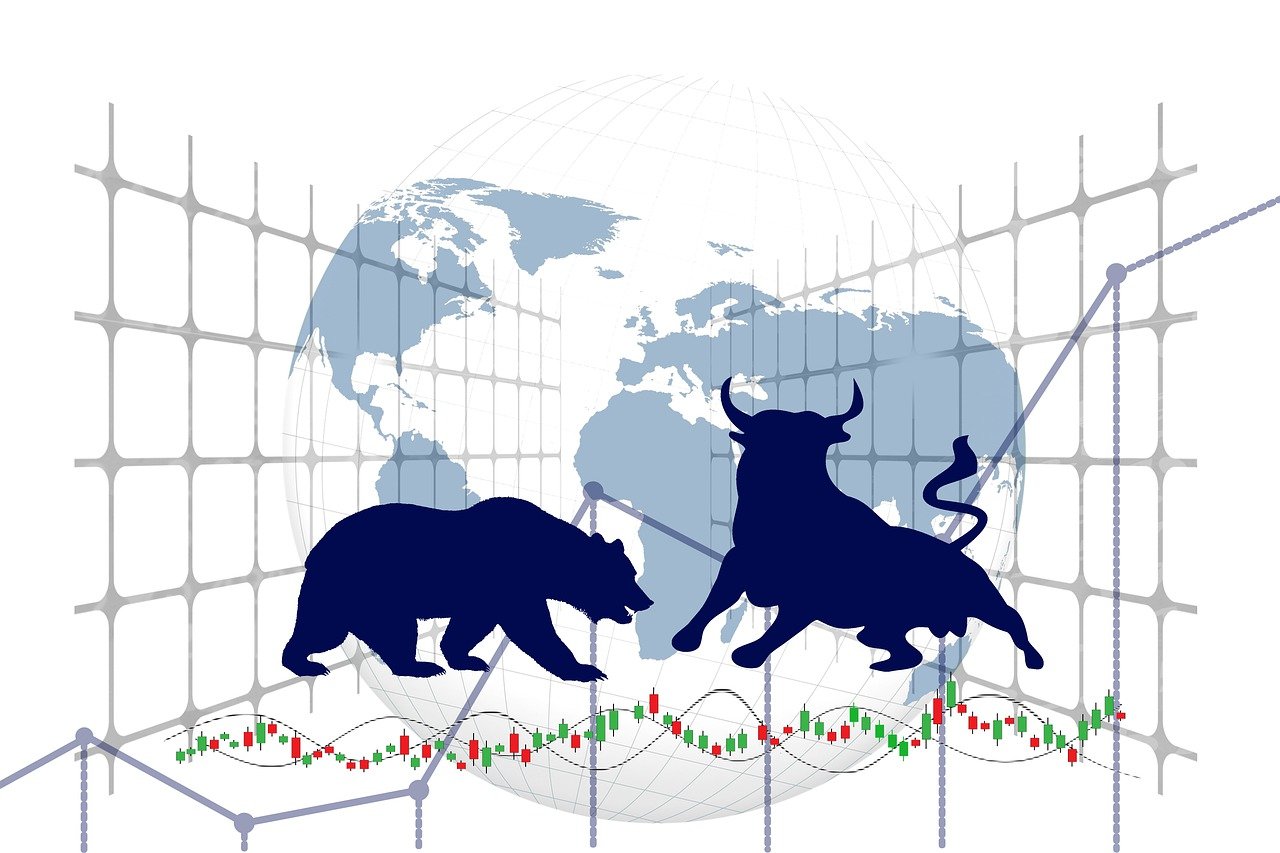In today’s hyper-competitive business environment, the ability to identify market trends before your competitors is more than a mere advantage—it’s a necessity for survival and growth. Shifts driven by evolving consumer preferences, technological breakthroughs, and macroeconomic factors mold market landscapes at an accelerating pace. Brands that detect these shifts early can reorient strategies, innovate products, and harness new opportunities while others scramble to catch up. From the rise of AI-powered services transforming industries to shifting values towards sustainability, a deeper understanding of trendspotting can turn foresight into tangible business success. This article unpacks practical approaches, industry tools, and tactical mindsets used by savvy entrepreneurs and market leaders to stay ahead of the curve in 2025’s dynamic marketplace.
Capturing a trend involves keen observation of subtle signals before they crystallize into widespread adoption. While some trends emerge from macroeconomic transformations charted by giants like McKinsey and Gartner, others bubble up from grassroots social movements or online communities monitored by platforms like BuzzSumo and TrendWatching. Combining these insights with real-time consumer data from sources such as Statista and Euromonitor, companies can validate promising leads without falling into hype traps.
But beyond analytics, spotting trends early demands a systemic approach that blends technology, cultural awareness, and continuous learning. Entrepreneurs equipped with these skills not only benefit from the first-mover advantage but also gain investor confidence and brand loyalty. They build businesses designed to thrive amid uncertainty rather than merely react to disruption. The sections below delve deeper into how to implement effective trendspotting practices and decoding the complex interplay of signals signaling tomorrow’s opportunities today.

Why Spotting Market Changes Early Builds a Sustained Competitive Advantage
Spotting market trends early is critical for businesses eager to maintain relevance and competitiveness. Markets are driven by constant flux—customer tastes evolve, disruptive technologies emerge, geopolitical changes shift economic landscapes, and consumer awareness around ethical or environmental issues grows. Recognizing these movements promptly unlocks a strategic advantage that directly impacts a company’s bottom line.
Early identification enables organizations to tailor their offerings, positioning themselves as innovators rather than followers. For example, when sustainable products became a rising demand, firms that incorporated eco-friendly designs and messaging early reaped enhanced brand loyalty and pricing power. Those who hesitated found themselves playing catch-up in saturated markets.
Furthermore, companies that miss or underestimate market shifts risk customer attrition, diminishing investor interest, and ultimately, obsolescence. The case of smartphone adaptation illustrates this: brands that rapidly optimized mobile experiences leveraged new growth avenues, while laggards lost significant market share. Industry leaders like Nielsen and Zywave continuously highlight how anticipating these changes propels sustained profitability.
Incorporating regular market intelligence reviews informed by reports from Mintel, Gartner, and Euromonitor equips decision-makers with detailed insights to detect weak and strong signals alike. Such discipline empowers businesses to pivot with agility under changing circumstances, prepare for variable economic conditions, and mitigate risks.
| Benefit of Early Trendspotting | Explanation | Example |
|---|---|---|
| First-Mover Advantage | Gain market leadership by launching innovations before competitors | Netflix transitioning from DVD rentals to streaming platforms |
| Improved Customer Loyalty | Meeting emerging needs fosters stronger brand connection | Patagonia’s early sustainability messaging |
| Investor Attraction | Trend-aligned ventures attract funding more easily | AI startups raising capital during surge in interest |
| Operational Agility | Proactive adaptation reduces costs and mitigates risks | Retailers adjusting supply chains during economic downturns |
- Monitor authoritative market research providers like Nielsen and Statista for consumer data.
- Subscribing to industry-specific updates from Euromonitor and Gartner offers macro and micro trend foresight.
- Engage with thought-leaders via platforms like LinkedIn; follow trend aggregators such as TrendWatching.
- Create internal systems for periodic analysis and response planning to emerging patterns.
Businesses that weave early trendspotting into their DNA empower themselves to be innovators not just reacting to but shaping the future. This proactive posture is fundamental for growth-oriented strategies that harness emerging technology and market sentiment synergies and avoid the dangerous pitfalls discussed in related entrepreneurial traps.
Practical Methods and Tools for Efficiently Spotting Market Changes
Identifying shifts before competitors demands a blend of observation, research, and the smart use of analytical tools. In 2025, advancements in data platforms and social listening tools create unprecedented opportunities for proactive trend discovery. Entrepreneurs and marketers can simultaneously track real-time consumer signals, competitor moves, and technology evolutions to gather a comprehensive market picture.
One foundational approach is monitoring industry news and detailed research reports generated by companies like Statista, Mintel, and McKinsey. These firms offer rich data sets and expert analysis uncovering shifts in consumer behaviors and emerging technologies long before they saturate mainstream conversation.
Setting up tools such as Google Alerts on industry keywords, competitor names, or emerging concepts ensures real-time updates. Complement this by following key publications and influencers on social networks like LinkedIn and Twitter for qualitative insights.
Social media and online forums also serve as trend incubators. Platforms like Reddit, particularly niche subreddits, and Quora discussions enable entrepreneurs to catch grassroots innovation signals directly from communities. Observing hashtags and content on TikTok and Instagram exposes viral ideas and micro-trends that can be rapidly capitalized on.
Consumer feedback and reviews form another essential signal source. Regularly analyzing consumer sentiment across Amazon reviews, Trustpilot, and Yelp reveals pain points and wants that traditional research might miss. Tracking patterns in feedback can identify opportunities for product differentiation or new feature development.
Additionally, competitive intelligence tools like SimilarWeb, SpyFu, and BuiltWith provide insights into competitors’ strategic moves—often indicators of shifting market conditions. Increasing advertising spend on specific keywords or adoption of new technology stacks can intimate upcoming trends requiring response or adaptation.
| Tool or Method | Description | Example Use Case |
|---|---|---|
| Google Alerts | Real-time notifications for custom keyword searches | Monitor for mentions of “AI in retail” and competitor launches |
| BuzzSumo | Track viral content and emerging topics across social media | Discover trending blog posts on sustainability |
| SimilarWeb | Analyze competitors’ traffic and marketing channels | Spot a rival increasing SEO investment in niche keywords |
| Mintel Reports | Deep market research with consumer behavior analysis | Identify rising popular product features within your industry |
- Leverage research from top analytics firms like Gartner and McKinsey for trend validations.
- Integrate social listening with tools like BuzzSumo to catch viral audience interests.
- Use competitive intelligence tools to see where competitors focus resources.
- Collect and analyze customer reviews through platforms like Yelp and Amazon.
- Subscribe to industry insights from Euromonitor and CB Insights to confirm emerging trajectories.
Combining quantitative data with qualitative insights from these sources enables a holistic understanding of market dynamics. This multidimensional scanning is illustrated by innovative companies using customized dashboards connecting these feeds for rapid decision-making. Such agility is invaluable in avoiding common pitfalls like misjudging trends or over-investing in short-lived fads, a concern addressed in strategic blind spot management.

How to Analyze and Validate Market Trends for Strategic Impact
Spotting market trends is only beneficial if they translate into actionable strategies backed by solid analysis. With a plethora of data available, focusing on the right metrics and validation methods is essential for avoiding costly missteps.
First, prioritize key performance indicators (KPIs) aligned with your industry and business goals. These might include sales growth in specific segments, customer acquisition velocity, or product adoption rates measured over time. A sudden rise or decline in these characteristics often signals a shift in consumer behavior or competitive dynamics.
Segmenting audiences by demographics, geographic locations, or behaviors refines this insight further. For example, a trend gaining momentum among Generation Z in urban areas may suggest different marketing tactics than a trend surfacing in suburban baby boomers. Such segmentation aids efficient resource allocation and tailored messaging.
Forecasting tools provided by TrendWatching and CB Insights offer predictive analytics based on aggregated data from multiple sources. These help businesses peek beyond immediate signals to shape medium-to-long-term strategies by anticipating future demands.
Integrating consumer feedback coupled with trend forecasting enhances confidence in emerging market directions. Regularly surveying customers about evolving preferences or pain points supplements external data and supports a customer-centric innovation focus. Companies excelling in this area harness both data and customer insights, forging stronger competitive positioning.
| Analysis Step | Purpose | Practical Example |
|---|---|---|
| Tracking KPIs | Detect shifts in market behavior | Monitor cart abandonment rates for eCommerce |
| Audience Segmentation | Identify which groups drive market change | Spot younger demographics adopting eco-friendly products |
| Use of Forecasting Tools | Predict future market directions | TrendWatching’s reports predicting subscription economy growth |
| Customer Feedback Analysis | Validate emerging needs and preferences | Mining product reviews for requested features |
- Select and monitor meaningful KPIs directly linked to your products or services.
- Segment data to uncover niche trends and untapped demographics.
- Use reports from CB Insights and TrendWatching for forward-looking insights.
- Incorporate frequent customer surveys and analyze feedback trends.
- Test hypotheses with pilot programs before full-scale implementations.
By anchoring trend identification to data-driven validation, entrepreneurs align limited resources toward opportunities with the highest potential. This balanced approach helps sidestep distractions by ephemeral fads and aligns innovation with consumer realities, supporting a resilient growth strategy outlined in resources like business strategy for limited resources.
Leveraging Technology and AI to Predict Market Trends Ahead of Competitors
Artificial intelligence and advanced analytics have revolutionized how businesses predict and react to market trends. Integrating AI-powered tools accelerates trend identification by processing vast data volumes and surfacing subtle signals imperceptible to manual analysis.
AI platforms like Google Bard, ChatGPT with plugins, and IBM Watson help synthesize reports, social media chatter, and consumer data. They generate concise trend summaries and trend impact forecasts that inform strategic decisions. Competitor monitoring tools such as Crayon and Kompyte harness AI to flag shifts in competitors’ marketing, pricing, or product strategies immediately.
Furthermore, predictive analytics models deployed by McKinsey and Gartner analyze historical and real-time inputs, creating simulations of possible market scenarios. These assist executives in testing “what-if” cases, reducing uncertainty around investments tied to emerging trends.
Integrating AI-driven trend prediction with human intuition is vital. While AI excels in pattern recognition at speed, domain expertise interprets cultural and psychological context that drives meaningful market shifts. This synergy ensures technology augments rather than replaces critical decision-making processes.
| AI Tool | Functionality | Use Case |
|---|---|---|
| ChatGPT + Plugins | Summarizes articles, generates trend reports | Rapidly assess market sentiment on new tech |
| Crayon | Competitor activity alerts with AI analysis | Spot competitor focus on sustainability initiatives |
| Google Bard | Natural language trend extraction | Analyze thousands of news articles to find weak signals |
| IBM Watson Analytics | Data modelling and predictive analytics | Forecast consumer demand shifts under economic stress |
- Utilize AI summarization to sift through overwhelming amounts of industry news.
- Use competitor monitoring platforms for near real-time intelligence.
- Apply predictive analytics to envisage market evolution under various scenarios.
- Enhance human judgment with AI insights—not replace it.
Integrating AI tools systematically helps businesses refine strategies, optimize operations, and innovate faster than competitors. For enterprises aiming for impactful growth without succumbing to analysis paralysis, AI-driven trendspotting becomes imperative. Learning to wield these technologies fills the gaps left by traditional methods, a path detailed in competitive advantage strategies for small businesses.

Strategies to Cultivate a Trendspotting Mindset That Outpaces Competitors
Beyond tools and data, a fundamental ingredient for ahead-of-the-curve market trend detection is cultivating the right mindset. Entrepreneurs and leaders must develop curiosity, openness, and an iterative learning culture to identify shifts early and respond smartly.
Adopting the following strategies helps build this competitive edge:
- Continuous Learning: Regularly participate in conferences, webinars, and workshops offered by research hubs like McKinsey, Gartner, and Euromonitor to stay informed on evolving market forces.
- Networking with Innovators: Engage with thought leaders and niche communities on platforms such as LinkedIn, Reddit, and specialized Discord servers to detect cultural and technological currents early.
- Consistent Trend Tracking: Establish a disciplined routine leveraging tools like Feedly, Google Trends, and BuzzSumo. Build custom dashboards and schedules for scanning relevant industry news daily or weekly.
- Data-Driven Experimentation: Pilot new ideas on a small scale guided by insights, measuring responses to iteratively refine concepts before full-scale rollouts.
- Challenge Assumptions: Cultivate a mindset willing to question existing business models and industry paradigms, identifying “pattern breaks” that may signify transitions.
These habits help prevent trend fatigue and strategic drift, ensuring focus remains on signals with lasting impact. Businesses embracing this growth-oriented mindset often convert early insights into innovation leadership.
| Mindset Practice | Description | Result |
|---|---|---|
| Continuous Learning | Engage regularly with expert content and market intelligence | Stay current with evolving trends and avoid obsolescence |
| Networking | Connect with innovators and communities | Spot emerging ideas before mainstream adoption |
| Routine Tracking | Establish systematic monitoring schedules | Build intuitive recognition of weak signals |
| Experimentation | Use data to test early concepts in the market | Reduce risk and validate ideas efficiently |
| Challenge Assumptions | Question status quo and watch for disruptions | Discover transformative opportunities |
Supporting this mindset with the right tools and fit-for-purpose processes is critical. Entrepreneurs interested in developing these capacities deeply can explore resources on effective business strategies and risk management at our services page. Building trend anticipation skills delivers a professional edge that ensures your brand never falls victim to outdated practices or misleading market signals.
Frequently Asked Questions on Spotting Market Trends Early
- How can I validate a trend before committing resources? Use data from Google Trends, Exploding Topics, and run small pilot tests or surveys to evaluate demand before scaling investments.
- What’s the difference between a fad and a sustainable trend? Trends typically solve ongoing problems and align with long-term consumer values, while fads are often driven by novelty and fade quickly.
- How frequently should I scan for new market trends? Weekly scans are ideal to stay current without information overload, using tools like Feedly and Product Hunt.
- Can small businesses compete with large corporations in trend-driven markets? Yes, agility and faster decision-making can be strong advantages for smaller players embracing trendspotting effectively.
- What industries benefit most from early trendspotting? While tech and retail are prominent, sectors like FMCG, automotive, finance, and telecom all gain through anticipating market shifts early.


